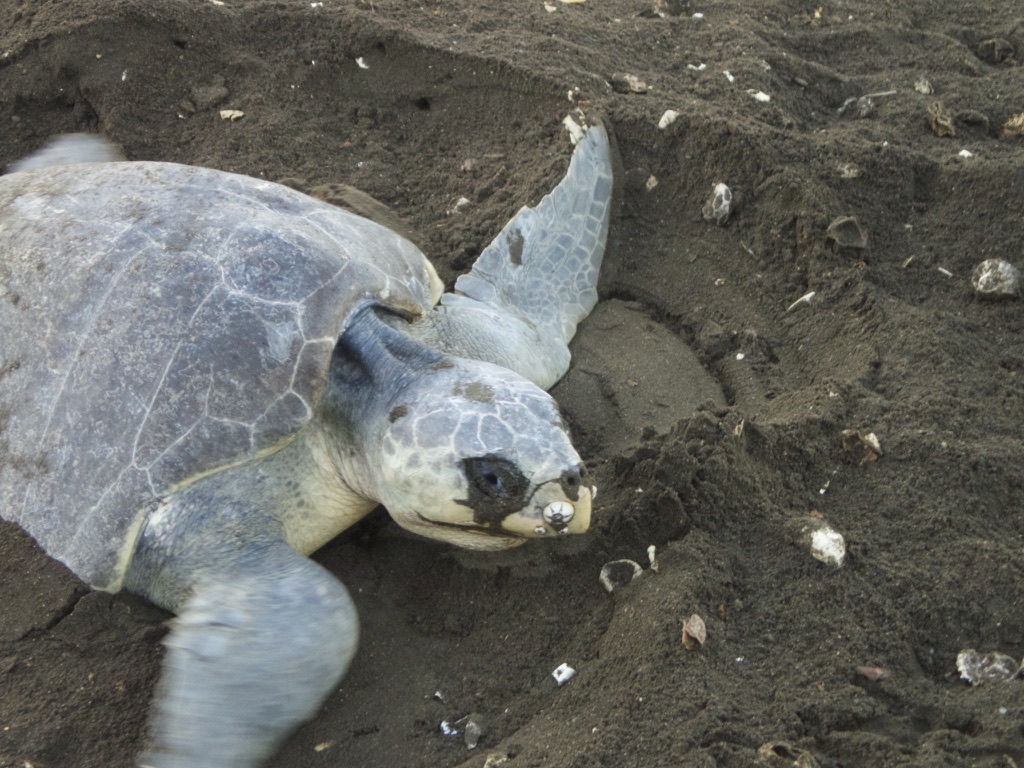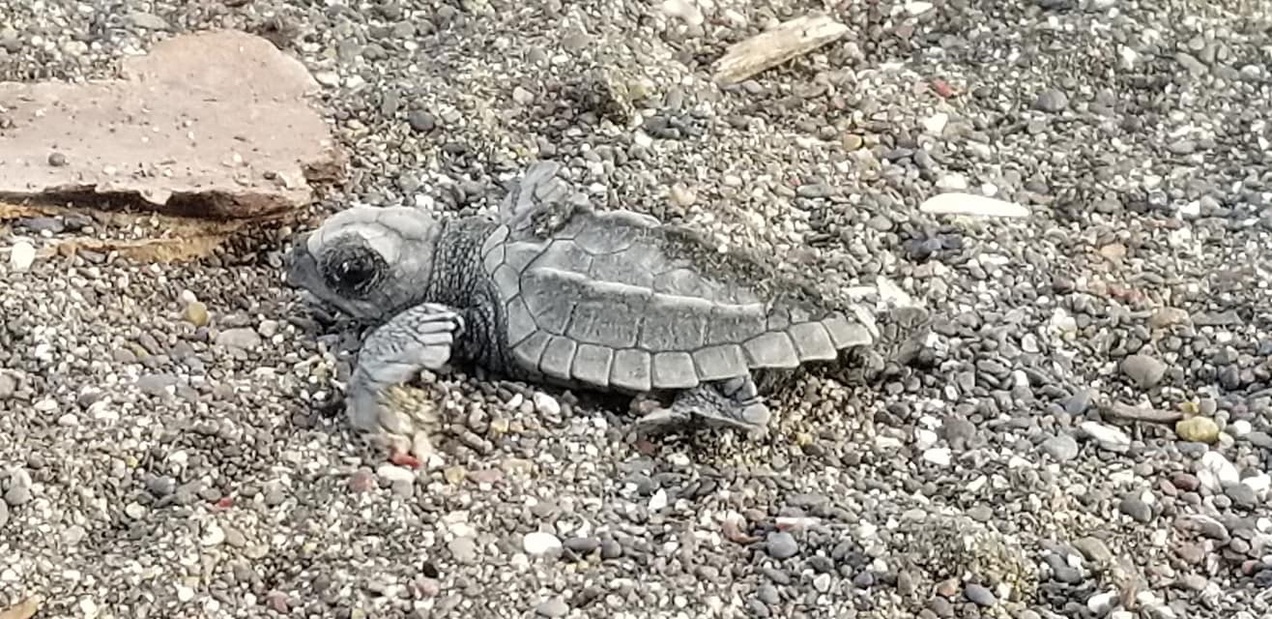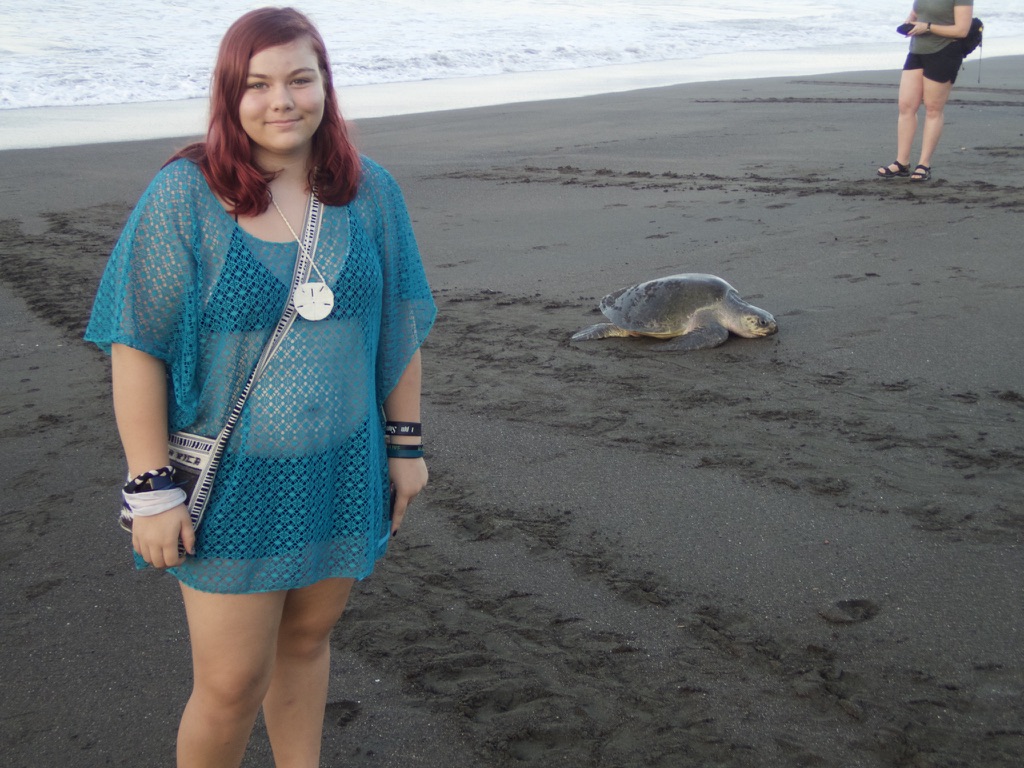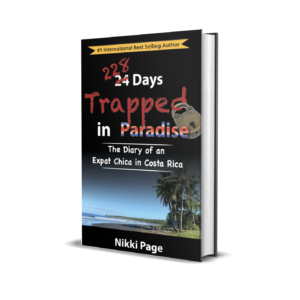Costa Rica is a paradise for wildlife enthusiasts, and one of the most incredible experiences one can have is watching sea turtles. These magnificent creatures, both nesting on the shores and swimming in the ocean, are a testament to the beauty and wonder of nature. With a thriving biodiversity and numerous protected areas, Costa Rica offers various locations to observe these ancient reptiles up close.
Being home to four different species of sea turtles—leatherback, green, hawksbill, and olive ridley—there are specific beaches that are best for observing each type in their natural habitat. Timing and location are key factors in maximizing your chances of witnessing these fantastic creatures. Our focus is to explore some of the best places in Costa Rica for sea turtle encounters.
From the Pacific to the Caribbean coasts, we'll share our top picks for turtle watching hotspots, providing you with an opportunity to experience one of the most amazing and unforgettable memories of your life. So pack your bags and get ready to embark on a truly magical Costa Rican adventure.
Overview of Sea Turtles in Costa Rica
In Costa Rica, sea turtles are a significant part of the nation's wildlife, and the country is renowned for its rich biodiversity. The country's stunning coastline provides opportunities to observe these marvelous creatures in their natural habitats. The variety of turtles present in Costa Rica's waters include the Green turtle, the Leatherback turtle, the Hawksbill turtle, and the Olive Ridley turtle.
These species can be found on both the Pacific and Caribbean coasts, making Costa Rica an exceptional destination for nature enthusiasts. By visiting specific beaches and parks throughout the country, we can greatly increase our chances of witnessing these magnificent animals firsthand.
Sea Turtles
Along the Pacific coast, some of the best locations to view sea turtles include Las Baulas National Marine Park and Ostional Wildlife Refuge. Las Baulas is home to the largest nesting population of Leatherback turtles, while Ostional Wildlife Refuge is known for its mass nesting events, called "arribadas," primarily for Olive Ridley turtles. Additionally, the Tortuguero National Park on the Caribbean coast offers a crucial nesting site for Green turtles and is also an important conservation area.
Apart from the nesting sites and times, we can also increase our chances of encountering sea turtles by participating in guided tours, where knowledgeable guides help maximizes the opportunities for observing these animals in their natural setting.
In conclusion, Costa Rica offers an unparalleled experience to admire the sea turtles, contributing to the country's reputation as a top wildlife destination. Accurate information and careful planning can enhance our journey, ensuring a memorable and respectful encounter with these wonderful marine creatures.
Types of Sea Turtles in Costa Rica
Green Sea Turtles
In Costa Rica, we can find Green Sea Turtles, which are known for their beautiful greenish shells. These turtles are mainly present on the Caribbean coast, specifically in Tortuguero National Park. They are herbivores and feed on seagrass, keeping the seagrass beds healthy for other marine life.

Leatherback Turtles
Leatherback Turtles are the largest sea turtles with a unique, leathery shell. They usually nest on the Pacific coast, particularly in Las Baulas National Park. Unlike the Green Sea Turtles, Leatherbacks are carnivorous, feeding on jellyfish and other soft-bodied organisms. Their numbers have been declining, making conservation efforts crucial.

Olive Ridley Sea Turtles
The Olive Ridley Sea Turtles, named for the olive-green color of their shells, are known for their mass nesting events called "arribadas." During these events, thousands of turtles come ashore to lay their eggs. Ostional Wildlife Refuge on the Pacific coast is a popular nesting site for these turtles. Like Leatherbacks, they are carnivorous, consuming a variety of invertebrates.
Hawksbill Turtles
Hawksbill Turtles are characterized by their distinct hawk-like beaks and beautiful, elaborate shells. They can be found across Costa Rica's coastline, with nesting occurring on both Pacific and Caribbean shores. They are omnivorous, consuming both plant and animal matter, including sponges and algae.
Loggerhead Sea Turtles
Loggerhead Sea Turtles are distinguished by their massive heads and strong jaws, which allow them to crush tough prey like crustaceans. They are occasionally found along the Costa Rican coast, particularly in the Pacific North region. Loggerheads are carnivorous and mainly feed on bottom-dwelling invertebrates.
Important Sea Turtle Habitats in Costa Rica
Tortuguero National Park
Tortuguero National Park, located on the northern Caribbean coast, is one of the most important nesting sites for the endangered green sea turtle. Thousands of these turtles nest along the 22-mile stretch of beach from July to October, and we can experience a unique opportunity to witness this natural phenomenon. Leatherback and hawksbill sea turtles also nest here occasionally.
Ostional Wildlife Refuge
Situated on the Nicoya Peninsula along the Pacific coast, Ostional Wildlife Refuge is a key nesting site for olive ridley sea turtles. During a unique event called arribada, thousands of turtles come ashore to lay their eggs between July and December, with peak months being September and October. Watching these turtles is truly an awe-inspiring sight.

Gandoca-Manzanillo Wildlife Refuge
Gandoca-Manzanillo Wildlife Refuge is situated near the border with Panama on the southern Caribbean coast. It is an important habitat for the green, hawksbill, and leatherback sea turtles. Nesting occurs between February and May for leatherbacks and throughout the year for green and hawksbill turtles, making this area an exceptional location to observe multiple turtle species.
Cahuita National Park
Cahuita National Park, along the central part of the Caribbean coastline, is home to the unique hawksbill turtle, famous for its bird-like beak. These critically endangered turtles can be spotted nesting around the coral reef ecosystems of the park, typically from March to October in a tranquil, serene setting.
Las Baulas National Marine Park
Located on the Pacific coast, Las Baulas National Marine Park on the Guanacaste peninsula is considered the world's most significant nesting site for the leatherback sea turtle. We can witness these ancient, giant turtles nesting at Playa Grande between October and February, making it a truly unforgettable experience.
Camaronal Wildlife Refuge
Camaronal Wildlife Refuge, on the central Pacific coast, is a crucial nesting site for four different sea turtle species: olive ridley, green, leatherback, and hawksbill. Nesting occurs at different times throughout the year, providing ample opportunity to observe these beautiful animals in their natural habitat.
Best Times to See Sea Turtles in Costa Rica
In Costa Rica, sea turtle nesting and hatching seasons vary by species and location, but generally, the best times to see these fascinating creatures are between July and December. Let's take a closer look at when each species is most active, and what the best times are to witness these amazing natural events.
Leatherback turtles predominantly nest on the Pacific coast, with the prime nesting season occurring between October to March. At this time, we can observe females coming ashore to lay their eggs, and a few months later, witness the hatching season. In particular, Las Baulas National Marine Park is a great spot to observe leatherback turtles during their nesting season.
Less Common
Green turtles can be found nesting along both the Caribbean and Pacific coasts, but the most significant nesting events take place on the Caribbean coast, specifically at Tortuguero National Park. The peak nesting season for green turtles occurs between July and October, with hatching following shortly thereafter, making it an optimal time for turtle sightings.
Hawksbill turtles are less common in Costa Rica, but their nesting season generally spans from March to October. They can be seen along both coasts, although nesting is more frequent on the Caribbean side.
Olive Ridley turtles can be found on both the Caribbean and Pacific coasts, but their most spectacular nesting event, known as arribadas, can be seen in Ostional National Wildlife Refuge on the Pacific coast. These arribadas occur when thousands of females come ashore to nest simultaneously, usually around the times of new moons. The arribada nesting events are most frequent between August and December.
Loggerhead turtles are rare in Costa Rica, and sightings are not guaranteed. However, if you're lucky, you might spot one on the Caribbean coast between July and October.
In summary, if you would like to witness sea turtle nesting and hatching events in Costa Rica, the time period between July and December is ideal. However, it's essential to remember that these are wild animals, and their behavior can be unpredictable. It's always best to consult with local experts or travel agencies to ensure you visit the right locations at the right times for the species you would like to observe.
Threats and Conservation of Sea Turtles in Costa Rica
In Costa Rica, we recognize the importance of sea turtles and their vital role in the ecosystem. Although these marine animals attract many tourists eager for ecotourism experiences, several challenges continue to threaten their survival. We will address these threats and discuss ongoing conservation efforts.
Sea turtles in Costa Rica face numerous dangers in their natural habitat. Some are categorized as endangered or critically endangered, making their populations increasingly vulnerable. Human activities like pollution, coastal development, and fishing contribute to the decline in the number of sea turtles. Fishing gear entanglements, ingestion of plastic waste, and increased predation on eggs and hatchlings are also constant threats.
Protection of Sea Turtles
Various national and international organizations are dedicated to the protection of sea turtles in Costa Rica. These conservation-minded institutions focus on creating protected areas to safeguard crucial nesting sites and promote sustainable ecotourism practices. Through constant monitoring of nesting beaches and rehabilitation centers, they actively aim to foster a safer environment for these marine creatures.
To improve the situation, we collaborate with local communities to reduce poaching incidents and promote sustainable livelihoods. Educational programs inform the public about the importance of sea turtles and the need to preserve their natural habitats. By raising awareness, we stand a better chance of promoting effective conservation measures.
In conclusion, numerous factors contribute to the threatened status of sea turtles in Costa Rica. With concerted efforts from conservation organizations, local communities, and the government, we strive to protect these incredible species and promote a sustainable future for both humans and marine life.
Travel Tips for Sea Turtle Sightings
Costa Rica is well known for its stunning beaches and rich marine life, including the magnificent sea turtles. As travelers seeking a unique experience, we have gathered some travel tips to maximize your chances of witnessing these beautiful creatures in their natural habitat.
Firstly, it's essential to know the best time to visit the beaches. In general, the prime months for sea turtle sightings are from July to October, with the peak season being August and September. Arribadas, or large synchronized sea turtle nesting events, are particularly impressive and can be witnessed on some beaches during this time.
Less Crowded Beaches
We advise visiting remote coastal areas, as sea turtles are more likely to nest on less crowded beaches. Some key areas to consider include Tortuguero National Park, Ostional Wildlife Refuge, and Marino Ballena National Park. As responsible travelers, we should always respect marine life and maintain a safe distance to not disturb the turtles while observing them.
Opting for a guided tour is a great choice to fully appreciate the experience. Local guides have expert knowledge and can provide insights into the behavior and biology of the sea turtles. Additionally, they can help identify the best coastal areas for sightings during your visit.
Snorkeling or Scuba Diving
To further enrich your sea turtle experience, consider engaging in snorkeling or scuba diving sessions. Seeing these graceful creatures glide through the water is an unforgettable moment. Many tour operators along the coast offer these activities, focusing on responsible practices such as minimal environmental impact and wildlife conservation.
Lastly, always follow the guidelines and regulations set by local authorities and marine conservation organizations. These measures are in place to protect both sea turtles and their precious nesting sites. By doing so, we contribute to their long-term survival and ensure future travelers can also enjoy the magic of Costa Rica's sea turtles.




